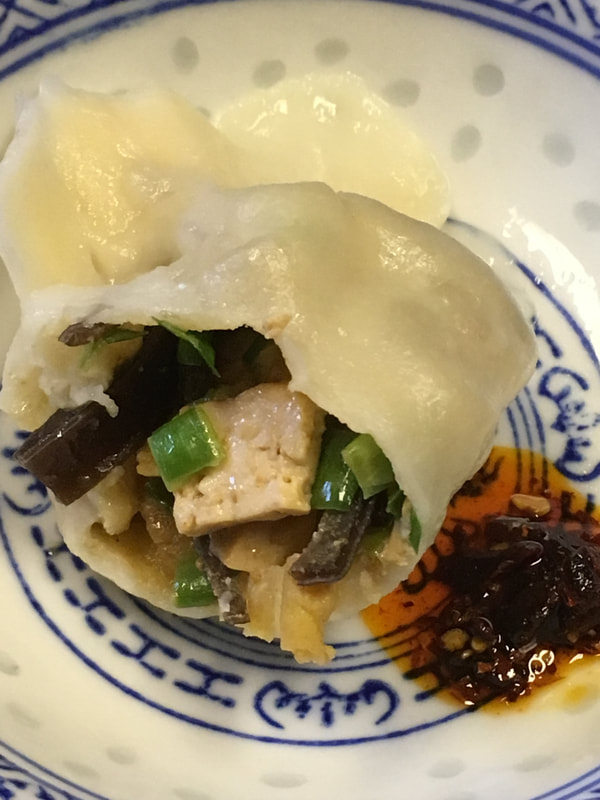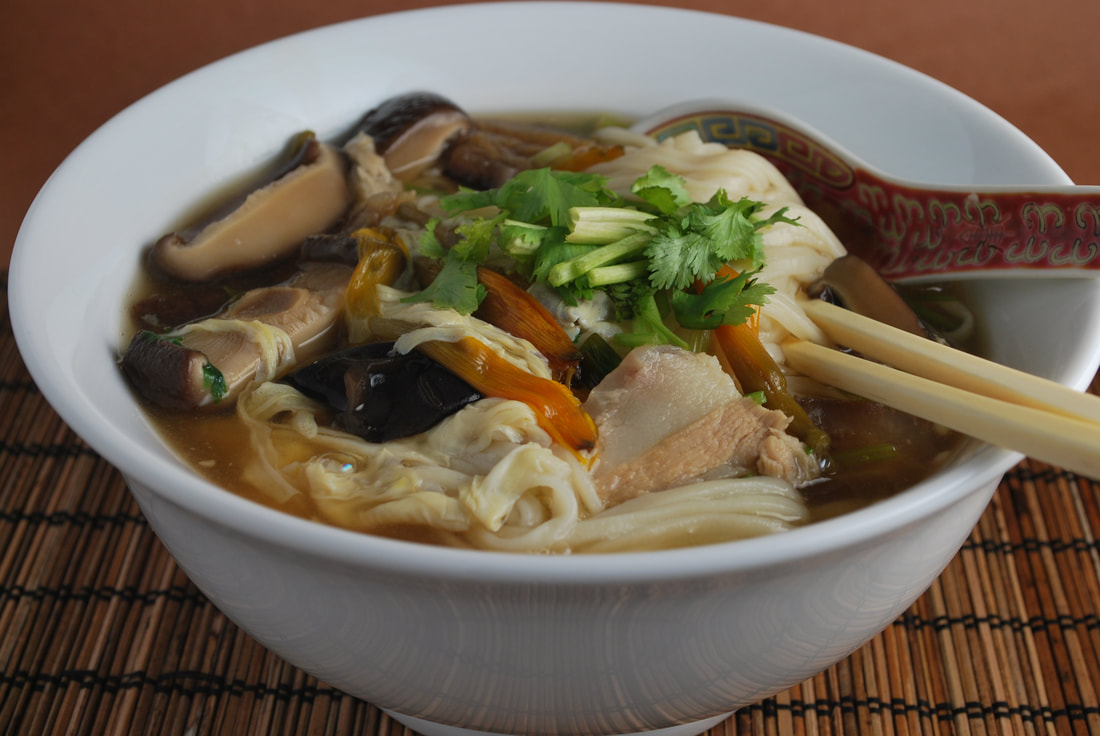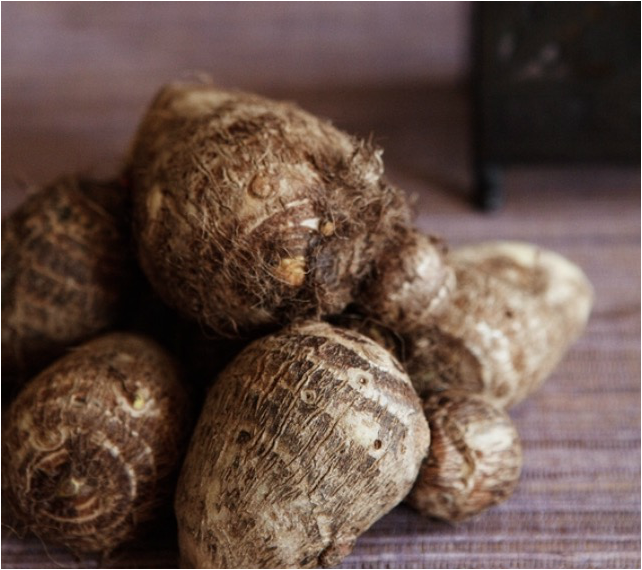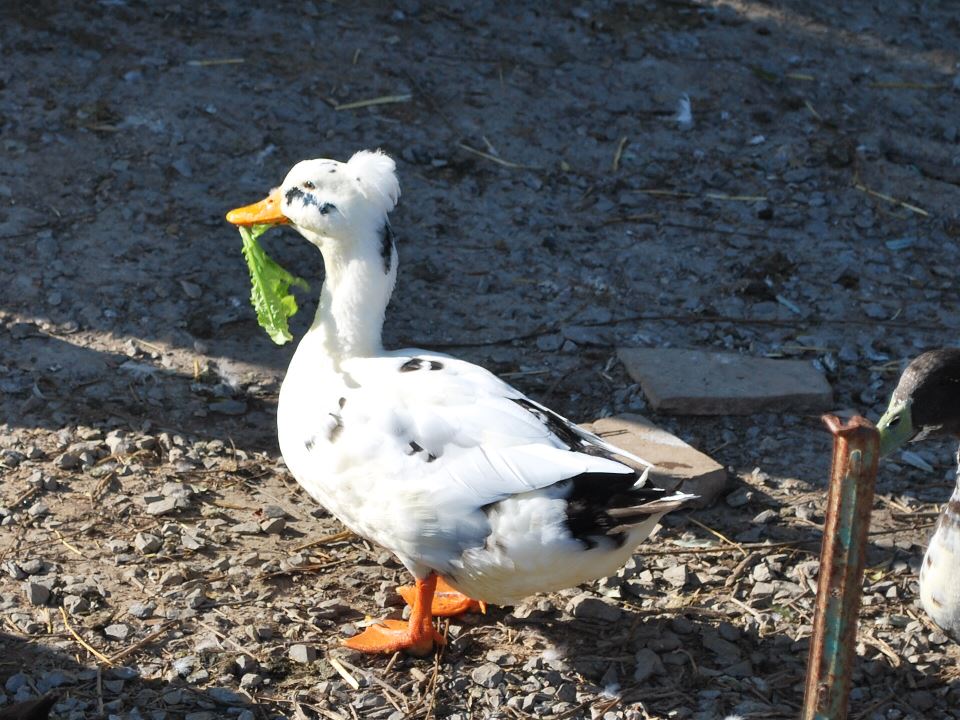|
When my sister comes to visit, my father always makes some type of vegetarian dumpling for her. The filling changes seasonally and depends on what's growing in the garden. While I am not a vegetarian, often I love the vegetarian dumplings just as much! I love the looser texture of the chopped vegetables along with julienned beancurd, coarsely chopped wood ear, and sometimes - but not in this picture - mung bean noodles. I especially love the generous drizzle of dark toasted sesame oil, minced ginger and chopped cilantro. You can't go wrong with all those delicious flavors! These dumplings are made with chopped garlic chives - an easy to grow perennial that is eaten like a vegetable (as opposed to an herb) in Chinese cuisine.
0 Comments
Everything noodle soup. Don't you think? Above, I see smooth white noodles in a savory broth, meaty shiitake mushrooms, floppy black wood ear, thinly sliced pork belly, yellow daylily buds, and fresh chopped cilantro.
Wait, what did I just say?! Yes, daylily buds. Those pretty summer garden fixtures, the yellow-orange common daylily, are a delicious and sweet edible flower. They're great fresh and lightly stir fried, but here, since they're a bit softer, I can tell they're rehydrated buds that we've dried in a food dehydrator in a previous summer. My father has a large planting of daylilies in his garden and though they bloom for a very long season, they grow in great profusion in the thick of the summer. To take advantage of the large number of blooms, we pick and dry them. They're perfect added to soups and noodle dishes through the fall and winter months. Try these fragrant edible flowers today - the Chinese Kitchen Garden book tells a lot more about how to grow and use these edible flowers. In the past few years of speaking to groups about Asian vegetables, without fail, at least a few people in the group mention that they go to Asian or international supermarkets and want to try different vegetables but don’t know what the vegetables are or how to use them. Labels and signage can be misleading, the workers are generally not helpful, and people are stuck with – do I take a chance or not?
Even though The Chinese Kitchen Garden is a gardening book, it can also be a good resource for those of you who want to experiment, but are not sure where to begin. If you’ve wanted a handbook of sorts to carry with you through the market, to help you identify what the vegetable is, or how to use it, this is your book. You may see the crazy-looking taro root. You may have even had taro-flavored foods. But did you know taro root can be toxic and needs to be cooked first? After it's cooked, it’s right as rain and so yummy in a number of dishes – sweet and savory. You can learn all this and more in the book! "Choy" in Chinese, is the generic word for vegetables. The leafy green that Mr. Cool is enjoying above is called "A Choy". I've yet to discover the origin or meaning of the "A" part of this leafy green, but there are some things I can tell you. It's a mild, leafy green, and very similar to romaine. It's a good one to eat raw (though in Chinese cuisine, we do cook most greens, even tender ones like this lettuce type), and clearly...ducks enjoy it as much as humans. Read this over at my Greenish Thumb blog to learn more about A choy! Learn how to grow this delicious fall green in The Chinese Kitchen Garden book.
 Photo Credit: Sarah Culver Photo Credit: Sarah Culver Congee is a traditional Chinese food made of rice cooked for a very long time in either water or broth. It's a favorite comfort food eaten any time of day, and just like I might crave a bowl of chicken noodle soup when I'm sick, or during the winter when it's cold and I want something comforting, I might also crave congee. There are many varieties of congee, and if you do some quick research, you'll find different styles within the cuisines of China, as well as in the cuisines of neighboring countries. Personally, there are several kinds I love: the pork and preserved egg version my mom makes most often, and plain, salted, congee that I'll either top with commercially prepared dried/shredded pork or fish or eat alongside a Chinese fried dough stick. During the lean college/post college days, I've even really enjoyed a bowl of congee topped with canned tuna. Simple, delicious, and a small bowl of rice makes a whole pot of congee! In the photo above is a delicious and more elegant summer congee. Very thin slices of marinated cod are added just after the congee is finished. Then to serve, each bowl is topped with lots of cilantro and ginger from the garden, and finally a drizzle of dark sesame oil. Often, my parents make this using fish we've caught from the pond just before lunch or dinner time. A hearty, easy and delicious summer meal doesn't get fresher. *Cod and ginger congee recipe can be found in The Chinese Kitchen Garden book. |
AuthorI'm Wendy Kiang-Spray, gardener, home cook, and author of The Chinese Kitchen Garden. Learn more about the book here. Enjoy the blog and be sure to like The Chinese Kitchen Garden Facebook page for notifications when there are new posts. Archives
April 2019
Categories
All
|




 RSS Feed
RSS Feed